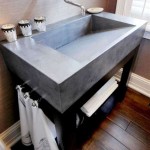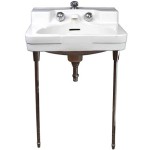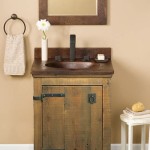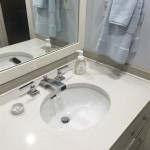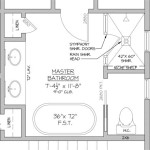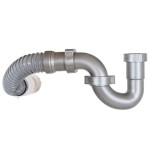How Much Does It Cost to Build a Bedroom and Bathroom?
Calculating the cost to build a bedroom and bathroom is a multifaceted process that depends on a range of factors. Location, size, materials, labor costs, and the complexity of the design all contribute significantly to the overall expense. This article will provide a comprehensive overview of the various elements that influence the cost, helping homeowners and developers understand the potential investment required for such a project.
Obtaining accurate cost estimates is crucial for effective budgeting and project planning. Overlooking specific details can lead to financial strain and project delays. Therefore, a thorough understanding of the cost components and potential variables is essential before embarking on the construction of a bedroom and bathroom.
Key Point 1: Breakdown of Cost Factors
Several key factors influence the overall cost of building a bedroom and bathroom. These can be broadly categorized into materials, labor, permits and fees, site preparation, and unforeseen costs. Each category encompasses a variety of sub-elements that must be considered for a realistic budget.
Materials: The selection of materials significantly impacts the overall cost. For the bedroom, this includes flooring, drywall, framing lumber, paint, doors, windows, and fixtures (light fixtures, ceiling fans, etc.). Higher-end materials like hardwood flooring or custom windows will naturally increase the budget. Similarly, the bathroom's materials include tiles, shower/tub, toilet, vanity, sink, faucets, and plumbing fixtures. The choice between basic ceramic tiles and premium porcelain or natural stone tiles can drastically alter the price.
Labor: Labor costs constitute a significant portion of the overall expense. This includes the wages paid to contractors, plumbers, electricians, carpenters, and any other trade professionals involved in the project. Labor rates vary significantly depending on location, the contractor's experience, and the complexity of the job. For example, running new plumbing lines or intricate electrical work will require specialized skills and thus higher labor costs.
Permits and Fees: Before beginning construction, it is essential to obtain the necessary permits from local authorities. These permits ensure that the project complies with building codes and safety regulations. The cost of permits can vary widely depending on the municipality and the scope of the project. Additionally, inspection fees may be required at various stages of construction.
Site Preparation: Depending on the project, site preparation may be necessary. This can include leveling the ground, removing existing structures, or addressing any environmental concerns. If the project involves adding an addition to the house, the cost of foundation work and structural modifications must also be factored in.
Unforeseen Costs: It is always prudent to allocate a contingency fund for unforeseen costs. These can arise due to unexpected issues such as hidden plumbing problems, structural damage discovered during demolition, or material price increases. A contingency fund of 10-15% of the total budget is generally recommended.
Key Point 2: Estimating Material Costs in Detail
A detailed breakdown of material costs is crucial for accurate budgeting. This involves researching the prices of all necessary materials, considering both quality and quantity. The following provides a more granular look at the material costs associated with building a bedroom and bathroom.
Bedroom Material Costs:
*
Framing Lumber:
The cost of framing lumber will depend on the size of the bedroom and the type of wood used. Prices can fluctuate based on market demand.*
Drywall:
The amount of drywall needed will depend on wall area. Higher quality drywall, such as moisture-resistant varieties, will increase the cost.*
Flooring:
Flooring options range from carpet and laminate to hardwood and tile. Each material has a different cost per square foot, influenced by quality and brand.*
Doors and Windows:
The type and number of doors and windows will impact the budget. Energy-efficient windows and solid-core doors will be more expensive than standard options.*
Paint:
The type and amount of paint needed will depend on wall area and the number of coats required. High-quality paint offers better coverage and durability.*
Fixtures:
Light fixtures, ceiling fans, and other fixtures contribute to the overall cost. Energy-efficient options can help reduce long-term energy bills.Bathroom Material Costs:
*
Plumbing Fixtures:
This category includes the toilet, sink, shower/tub, and faucets. Prices vary widely depending on brand, style, and features.*
Tiles:
Tile is a common choice for bathroom floors and walls. Material choices include ceramic, porcelain, natural stone, and glass. Each has a different price point.*
Vanity:
The vanity serves as storage and houses the sink. Options range from pre-fabricated vanities to custom-built units, with varying price points.*
Shower/Tub:
The cost of the shower or tub will depend on the material and features. Options include acrylic, fiberglass, cast iron, and custom-tiled showers.*
Bathroom Fan:
A bathroom fan is essential for ventilation and moisture control. Consider models with features such as timers or integrated lighting.*
Lighting:
Bathroom lighting should provide adequate illumination for tasks such as grooming and shaving. Layered lighting, including ambient, task, and accent lighting, is recommended.To estimate material costs, it is recommended to create a detailed list of all necessary materials and obtain quotes from multiple suppliers. Compare prices and consider the quality and durability of each product before making a decision.
Key Point 3: Understanding Labor Costs and Obtaining Quotes
Labor costs are a significant portion of the overall budget, and it is essential to obtain accurate quotes from qualified contractors. The cost of labor will depend on the scope of the project, the complexity of the work, and the experience level of the contractors. Factors influencing labor costs include the following:
Contractor Fees: General contractors typically charge a percentage of the total project cost or a fixed fee. It's important to understand how contractors structure their fees and what services are included.
Plumbing Costs: Plumbing work involves installing or rerouting pipes, connecting fixtures, and ensuring proper drainage. The complexity of the plumbing work will impact the cost.
Electrical Costs: Electrical work involves wiring the bedroom and bathroom, installing outlets and switches, and connecting light fixtures. Adhering to electrical codes is crucial.
Carpentry Costs: Carpentry work may include framing walls, installing doors and windows, and building custom cabinets. The skill level of the carpenter will influence the quality and cost of the work.
Tile Installation Costs: Installing tile requires precision and skill. The cost of tile installation will depend on the type of tile, the size of the area, and the complexity of the pattern.
Drywall Installation Costs: Installing drywall involves hanging, taping, and finishing the drywall. Skilled drywall installers can create a smooth and seamless finish.
To obtain accurate labor quotes, it is recommended to solicit bids from multiple contractors. Provide each contractor with a detailed scope of work and ask for a breakdown of their labor costs. Verify that the contractors are licensed and insured. Check references and reviews to assess the quality of their work.
Negotiating labor costs is possible, but it is important to be respectful of the contractors' expertise and experience. Consider offering incentives, such as paying for materials upfront or providing a bonus for completing the project on time and within budget.
Beyond these direct cost considerations, homeowners should also factor in indirect expenses, such as temporary housing if the construction renders part of their home uninhabitable. The cost of living in a hotel or short-term rental should be planned for if necessary.
Furthermore, consider the potential impact on property taxes. Adding a bedroom and bathroom can increase the assessed value of the home, leading to higher property tax bills. Consulting with a local tax assessor can provide insight into potential changes in property taxes.
The timeline for construction is also a critical factor. Delays can lead to increased costs, so it is important to have a realistic schedule and manage project timelines effectively. Regular communication with contractors and subcontractors is essential for keeping the project on track. Unforeseen weather events can also contribute to construction delays.
Finally, it's beneficial to research financing options if you are not paying for the project with cash. Home equity loans, personal loans, and construction loans are common ways to finance home improvement projects. Comparing interest rates and loan terms can help you find the most affordable option.

How Much Does A Bedroom Extension Cost In 2024 Checkatrade

Cost To Add A Bathroom 2024 Guide Forbes Home

How Much Does Adding An En Suite Cost Bathroom Guru

How Much Does It Cost To Build A Closet From Scratch

The Average Costs To Build A 4 Bedroom House Explained G J Gardner Homes

Average Home Addition Cost In 2024 Forbes

How Much Does A Nj Master Bedroom Addition Cost Design Build Planners

How Much Does A Bathroom Remodel Cost In 2024 Checkatrade

How To Make An En Suite Bathroom Work In Your Space

How To Add An Ensuite Bathroom Real Homes

